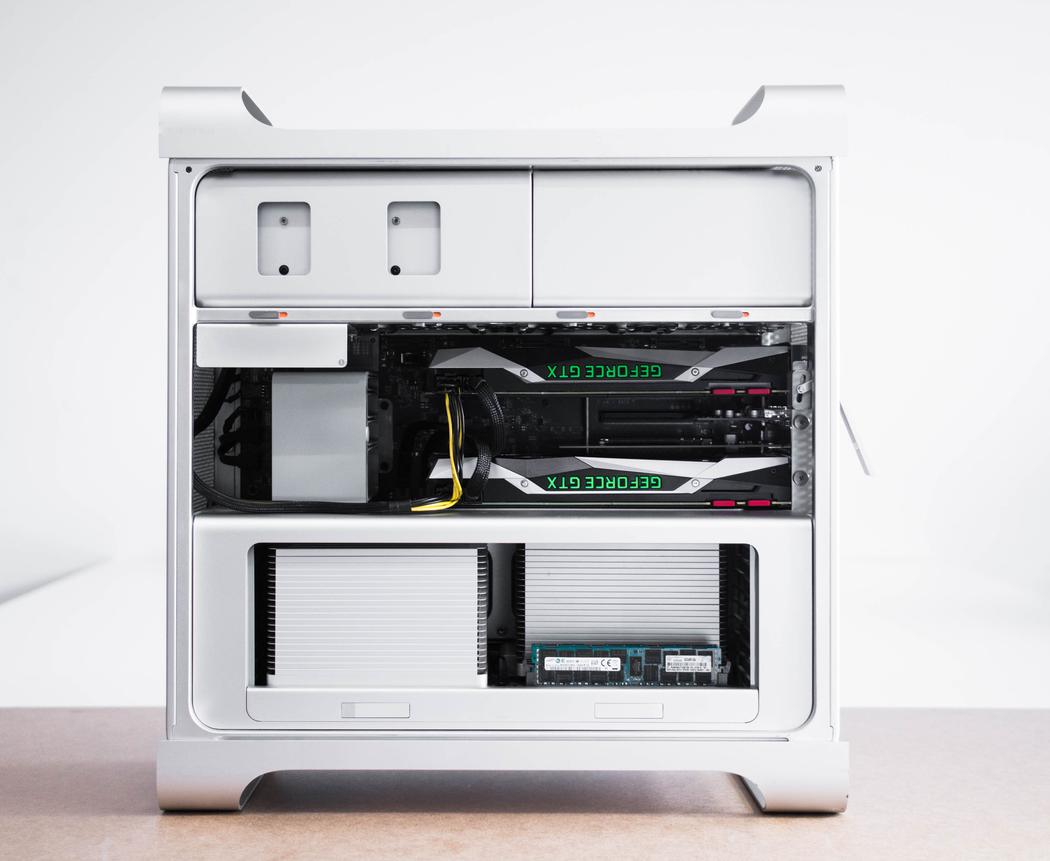People want the new Mac Pro so badly they're upgrading the old one

When you want something badly enough, you’ll do anything to get it. For those tapping their feet waiting on the Mac Pro 2018, that means making one themselves – using six-year-old hardware.
ExtremeTech reports that third-party Mac hardware resellers, capitalizing on the impatience of Mac Pro-starved professionals and power users that were ill-served by the 2013 ‘trash can’ revision’s limitations, are offering upgraded 2012 Mac Pro 5.1 models to customers.
Essentially, these resellers are creating Hackintosh – the practice of building Macs from scratch using parts supported by macOS – Mac Pro models to appease the needs of an audience that Apple itself has promised to serve some time in 2018.
ExtremeTech cites a Danish reseller known as Big Little Frank that – unlike traditional Hackintosh makers – having dedicated itself to offering up Mac machines built around the 2012 Mac Pro’s older processor platform. Why?
[Editor's Note: A previous version of this article inadvertently depicted Little Big Frank as a Hackintosh maker, which is not the case. A Hackintosh is an unofficial machine with a third-party motherboard or logic board and extra software needed to use unsigned custom kernel extensions. We apologize for the error.]

No two Mac Pro editions are made alike
That’s because, while the 2012 Mac Pro is limited by what logic board and processor it can accept, it offers features that the 2013 edition simply can’t. That includes niceties of 2012 that have all but become necessities in 2018, like multiple drive bays and the ability to use modern graphics cards in SLI (Nvidia) or CrossFire (AMD) configurations.
If you’re a professional or power user that relies on graphical output, then this seems like a far better solution than AMD’s far-dated GCN 1.0 architecture within the 2013 Mac Pro.
Sign up for breaking news, reviews, opinion, top tech deals, and more.
However, the absolute fastest processor setup that’s compatible with a 2012 Mac Pro’s logic board is a pair of Intel Xeon X5690 CPUs, a six-core chip with a 3.46GHz base and 3.73GHz turbo clock speed. Considering that modern workstations include chips with 12-cores on a single die that can then be configured in tandem from there, you’re missing out on a lot of speed.
Not to mention that this logic board doesn’t support modern features that the work world now thrives on, like Thunderbolt 3 and USB 3.1. Resellers can add these features through third-party parts , which you’d surely pay extra for.
So, while the desire for a better Mac Pro that serves the needs of a wider gamut of professionals and power users is easy to understand (and something still not achieved by the 2017 iMac Pro), it’s as tough for us as it is for ExtremeTech to recommend going this route when you’re already touching the ceiling of what’s possible on the 2012 Mac Pro platform.
What your left with is the choice of either dropping macOS and going for a modern PC or waiting it out for Apple to deliver on its promise of a modular Mac Pro this year. We have a funny feeling a good amount of you will take the latter option.
- These are the best Macs available today

Joe Osborne is the Senior Technology Editor at Insider Inc. His role is to leads the technology coverage team for the Business Insider Shopping team, facilitating expert reviews, comprehensive buying guides, snap deals news and more. Previously, Joe was TechRadar's US computing editor, leading reviews of everything from gaming PCs to internal components and accessories. In his spare time, Joe is a renowned Dungeons and Dragons dungeon master – and arguably the nicest man in tech.